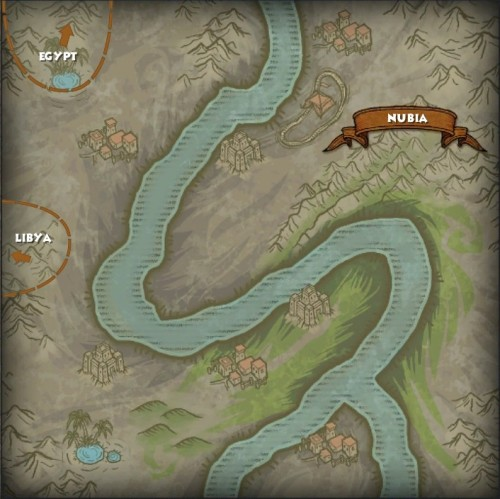This is the second of a series of articles in which I go through each of the six civs.
 |
| Egyption shield used in AoEO |
I did this by earning Empire Points after reaching level 40 on Greek - I was able to buy Egypt (Eggies).
My knowledge of the Eggies isn't as detailed as the Greeks.
I can say this though, despite my obvious bias for the Greeks, almost every day I’m discovering something new with my Eggies, being pleasantly surprised by what you can achieve, and this leads me to believe that if I had come to Egypt first – it probably would have been my favourite civ!
Click Open the book below to read more.
 |
| Naxos - my Egyptian city |
Points of Difference
When you come to Egypt from the Greeks, you immediately notice a few differences:
- there are three different temples and three different types of priests – this is a civ which puts a bit more of a focus on priests and temples;
- you start all quests with a priest as part of the package;
- you do not age up in your Town Centre when you have reached the right amount of resources, rather, you build the next temple, meaning you need to use villagers to do that, but it also means you keep producing villagers while aging up – which translates as an economic advantage;
- you do not have an archery school in Egypt, your three ranged units are spread across your barracks (slinger); stables (chariot archer) and fortress (elephant archer); and
- from Age III you can produce elephants from you fortress – and that’s quite handy! The Egyptian elephant would just about be the strongest military unit which can be produced in Age III.
- increase drop-off rates at storehouses and town centres of resources gathered by villagers;
- improve unit production rates (villagers reduce from 14 to 13 seconds on the Priestess of Ra alone, while spearmen get down to 7 seconds, which is very quick); and
- improve building rates.
All in all, it makes for an improved economy, and on some of the bigger quests (e.g. You Complete Me in Argos) , it’s quite noticeable how much quicker you can build up your economy and resources in comparison to Greeks.
However, you are a bit susceptible early on, with the Eggie spearman being weaker than the Greek version, although it can be produced at a much faster rate.
Try a spearman rush on Skirmish, and you notice that with the Eggies, with the help of the Priestess of Ra, you can complete the lower levels extremely quickly (lightning quick), but at the higher levels, the spearmen get killed off quicker, and you are relying on the quicker replenishment to stay in the game. All in all, it takes a little longer than the Greeks.
Where you get an early chance to build up, you’ll get to your population cap quite quickly with Egypt.
Egypt also has decent siege (catapults, catapult triremes and pallintonons).
From Age IV you can produce Elephant Archers. These are resource intensive but also potent. A specific advisor card is available to reduce their cost.
 |
| My War Elephants make mince meat of the catapults in Elite Rogues |
The advantage of the elephants shows up in some popular quests. On Elite Rogues, in Greek, you need to get to Age IV to start producing hippikons, but in Egypt, start producing elephants straight away! Don’t even worry about aging up, it’s not necessary. And let me tell you, the elephants smash the elite catapults like match sticks (see above).
The elephants are also quite good in Persian Coercion, having them available in Age III while still having access to rams (in Egypt, they’re siege towers, and quite good too).
In a milestone quest such as Defense of Arsinoe, it seemed easier and quicker with Egypt, once again, getting your economy up and running early on is the key.
There are a good range of campaign quests which progressively take you through the unique aspects of Egypt, including some challenging quests such as Sandstorm!:
The series of camel races is entertaining enough, although I draw the line at the sleep-walking prince, I found that just a little bit too silly and irritating.
In short, priests and elephants make for a fair bit of difference from the Greeks, and my experience so far is that you can achieve it all with the Egyptians, often with greater efficiency, and it’s hard not to fall in love with the mass trumpeting of elephants as you mow down and crush your enemies!
Click here for part one of the Civilisations series - Greeks.
Click here for part three of the Civilisations series - Persians.




No comments:
Post a Comment